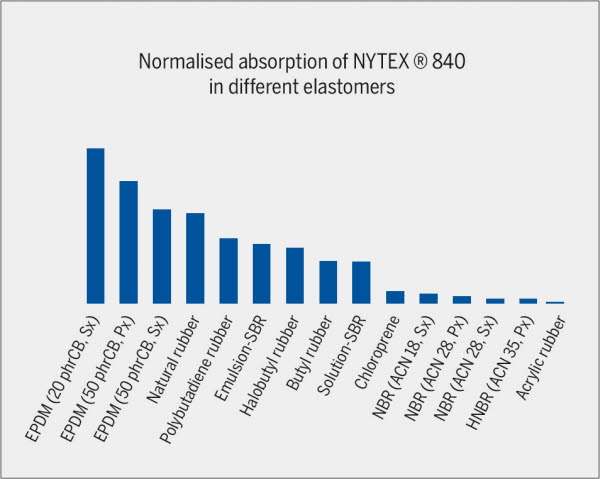Optimal plasticisers
Elastomer to oil compatibility is the key to selecting plasticisers for rubber formulations. A major evaluation of mineral oils highlights the importance of polarity, and explains how Nynas is able to offer broad solutions.
 Patrik Salomonsson
Patrik Salomonsson
Development Engineer
Nynas AB
“Compatibility between the oil and the polymer is important, as it ensures proper miscibility of formulation components and long-term stability of the final rubber material,” says Patrik Salomonsson, Development Engineer, Nynas Naphthenics.
Oils are used by, for instance, tyre manufacturers to plasticise or soften commonly-used rigid polymers of high molecular weight, making these easier to process. By helping to solubilise and disperse various additives and fillers used in the compound formulation, the extender oils also play a part in modulating the rubber’s final physical properties, such as hardness, mechanical strength and durability. Furthermore, the intrinsic properties of the oil will influence the low temperature performance of the rubber.
A common method for assessing the compatibility between plasticisers and polymers is to immerse standard reference elastomers in oils under specific conditions, and then measure how the rubber pieces change in terms of mass and dimensions.
“Swelling or shrinkage, together with changes in hardness and other properties, will give you a good indication of the mutual affinity between the components,” explains Patrik Salomonsson.
Evaluating Nynas process oils with a broad range of elastomers of varying type, composition and curing chemistries, covering the entire spectrum from non-polar to highly polar elastomers, he was able to establish the advantages of naphthenic oils.
“Generally speaking, mineral oils exhibit low polarity due to their non-polar paraffinic chains. Any addition to the polarity will depend on the degree of unsaturation, usually in the form of aromatic structures. Owing to its high content of naphthenic rings, which are an intermediary between paraffinic and aromatic molecules in terms of solvent power, the polarity of naphthenic oils can be optimised to produce plasticisers with a balanced or even customised paraffinic, naphthenic or aromatic character,” he says.
“It is the versatility of naphthenic oils that enables Nynas to offer solutions to a wide range of rubber producers.”
Polarity match
- The comprehensive study showed that matching polarity is key to successful compatibility between oil and polymer. In naphthenic oils, the polarity can be optimised, enabling it to match the polarity of the polymer used in a particular rubber formulation.
- The results also indicate how a plasticiser’s average molecular weight, viscosity gravity constant and aniline point – the latter two being common solvency indicators – can be used to predict process oil compatibility with various elastomers.














































